3 New Resources to Help You Design Your Automated Weather Station
by Garrett Wheeler | Updated: 09/27/2017 | Comments: 0
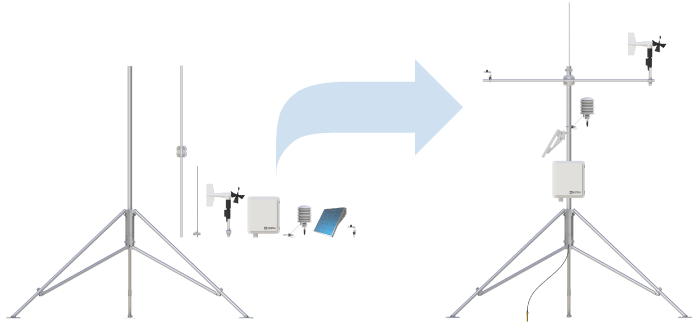
We realize that designing a custom, high-quality automated weather station to fit your needs can be challenging, as there are many considerations to keep in mind. To help you with this task, we have recently created three new resources that I’ll introduce you to in this article.
#1- Information: From the Basics to Purchase Considerations
Before you’re ready to invest in monitoring equipment for a new environmental research project, it’s important to understand not only the requirements of your project or application, but also the various considerations that come into play while designing your station. To help you get started, we’ve created a new Automated Weather Stations page on our website. There are two sections that are especially helpful: “Fundamentals” and “Purchase Considerations.”
Fundamentals
In the “Fundamentals of Automated Weather Stations” section, you’ll find answers to questions like these:
- What is an automated weather station?
- What are the different components of an automated weather station?
- Where can automated weather stations be used?
- How do automated weather stations differ from each other?
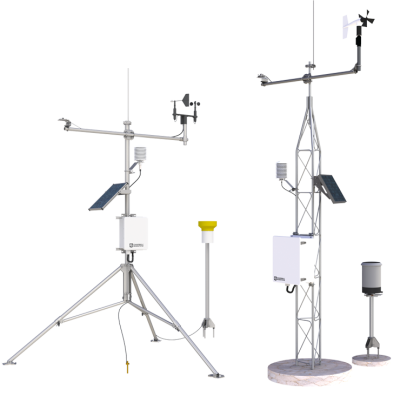
When considering your station, it may be easy to focus on sensors and data loggers—the components of your station that relate directly to your end goal of analyzing and publishing data. However, other components can be just as critical in setting up a complete and functional data acquisition system, such as a weather station. The following sections describe important components for any station.
Sensors
Your sensors convert observations of natural phenomena to electrical signals that can be measured and recorded by a data logger.
Data Logger
Often considered the brain of a station, your data logger not only functions to record data from sensors, but it can also be used for calculations, modeling, and process control.
Power supply
Without sufficient power for continuous operation, your station cannot function properly. Typically, automated weather stations use a 12 V battery and a charging method, such as an ac source or solar panel.
Mounting equipment
Each weather station uses a mounting structure—such as a tower or tripod—with hardware to mount each sensor and a sealed enclosure to house sensitive electronics, including the data logger and power supply.
Communications
Interaction with weather stations can occur directly on site or remotely via telemetry options such as Wi-Fi, spread-spectrum radio, satellite, or cellular modem.
Software
Interacting with a weather station usually requires specific software to set up or program the system, download measurement data, and complete other tasks.
Training
To understand how to interact with your automated weather station, set it up, and keep it running optimally, it’s critical to have a baseline of knowledge and basic skills.
Purchase Considerations
How do you select an automated weather station that is best-suited to your application? What are the important things you should consider?
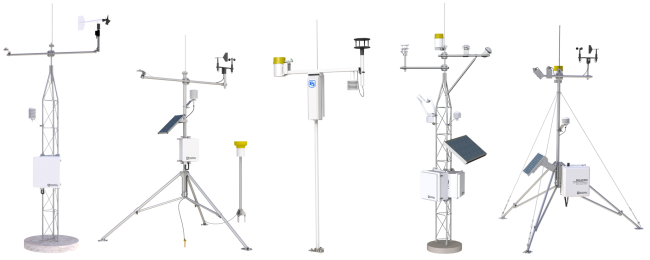
When you’re ready to consider the different aspects of your automated weather station, review the information in the “Purchase Considerations for Automated Weather Stations” section. You’ll find considerations you may not have thought about on these topics:
- Measurement requirements
- Measurement quality
- Site environment
- Monitoring duration
- Programming flexibility
- Data storage
- Communications needs
- Power requirements
- Setup
- Mounting
- Maintenance
#2 - Packaged Stations: For Weather, Meteorology, and Mesonets
You may have a good understanding of what an automated weather station entails—including the components that need to be selected for the best functionality at your site and for your application. Based on your knowledge, however, you may realize that designing your station could be a cumbersome and potentially time-consuming process.
To ease your burden, we offer the new PRO series of weather stations. These stations help take the guesswork out of putting your whole system together, while offering field-proven, high-quality components that have endured worldwide use in environmental monitoring applications. These stations provide you with quality measurements critical for your research, operational, and meteorological applications.
The first three stations in our PRO series (the MesoPRO, MetPRO, and WxPRO) are complete research-grade weather station solutions. There are, of course, differences among the stations that may affect your selection. The following descriptions provide a quick overview of the stations with links to their web pages where you can find more information.
MesoPRO Research-Grade Mesonet Station
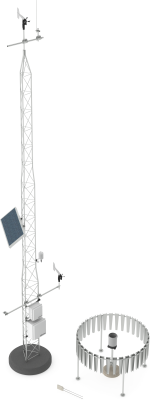
The MesoPRO station is a high-quality, durable weather station intended for applications where having a 30 ft (10 m) tower is desired for permanence. This station also enables you to make measurements at many different heights. Weather station towers are commonly used in large networks such as mesonets. The sensors packaged with the MesoPRO provide the best blend of durability, accuracy, and performance for use even in remote and unattended applications. You can set this station up in a large network using a modem on a 4G LTE cellular network.
MetPRO Research-Grade Meteorological Station
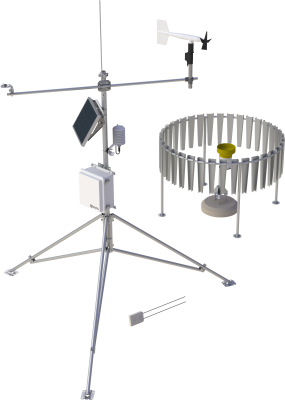
The MetPRO station uses the same high-quality instruments as the MesoPRO, but it offers a convenient 10 ft (3 m) tripod rather than a tower for mounting hardware. The tripod adds mobility for shorter-term research projects. With a smaller footprint, the MetPRO’s tripod offers an easier method to install a full meteorological station.
WxPRO Entry-Level, Research-Grade Weather Station
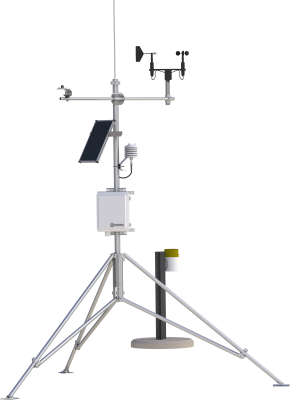
The WxPRO station is an entry-level, research-grade weather station. Designed for the budget-conscious researcher, this station is a lower-cost offering than the MetPRO while still providing quality instruments for your measurement and monitoring needs.
#3 - Complimentary Design Assistance: To Customize
If the packaged automated weather stations don’t provide the solution you’re looking for, our experts—who have built and designed systems that are deployed in locations all over the world—can help you design the perfect system for your specific application.
We have developed an easy-to-use System Design Request form for you to request station design help. Just provide some information about your system requirements so our experts can design a quality, cost-effective system for you. This is a no-obligation, complimentary service.
Conclusion
I hope these new resources provide you with the information you need to successfully navigate the process of designing a custom, high-quality automated weather station to fit your needs. If you have any questions about these resources, please post them below.
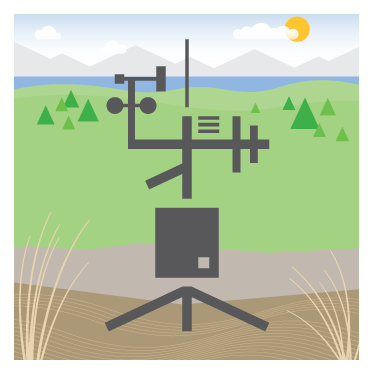




 Garrett Wheeler is an Application Engineer in the Environmental Market Group at Campbell Scientific, Inc., focusing on weather observation networks and mesonets. He enjoys all things related to the weather, especially following and studying extreme and severe events. Garrett’s background is in physics, and he likes to learn as much as he can about different scientific disciplines from our customers.
Garrett Wheeler is an Application Engineer in the Environmental Market Group at Campbell Scientific, Inc., focusing on weather observation networks and mesonets. He enjoys all things related to the weather, especially following and studying extreme and severe events. Garrett’s background is in physics, and he likes to learn as much as he can about different scientific disciplines from our customers.
Comments
Please log in or register to comment.